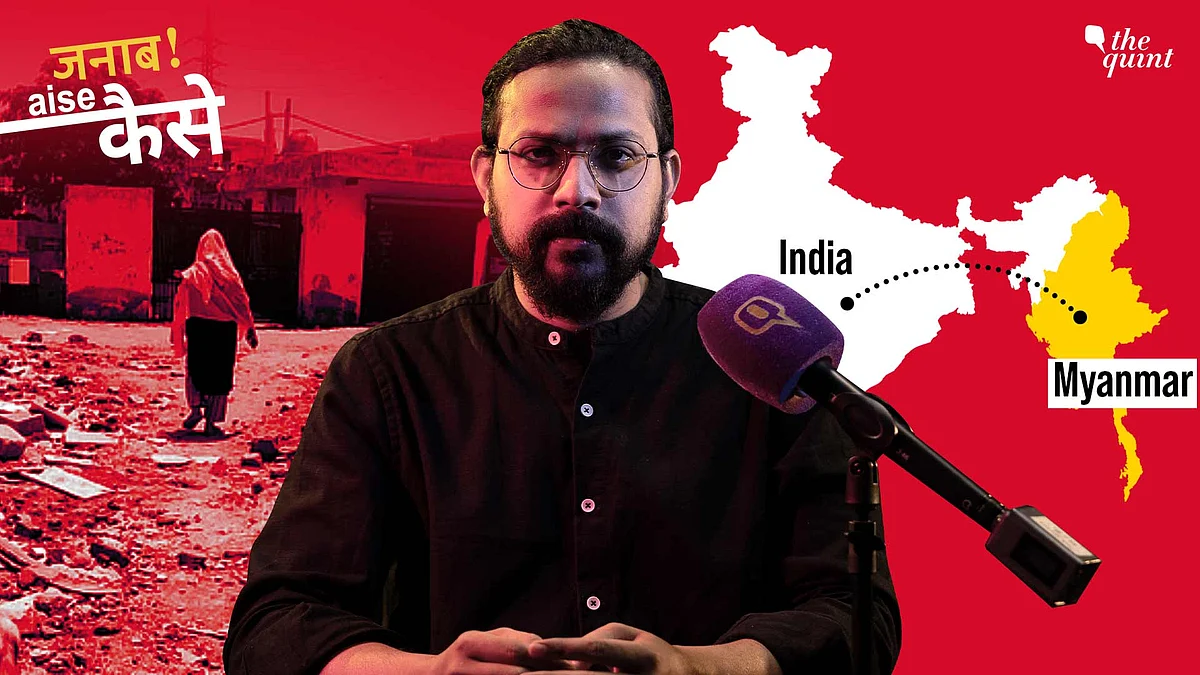UN Initiates 'Probe' after Rohingyas Cast into Sea by India
India faces UN 'probe' over Rohingya sea abandonment.

advertisement
On 4 October 1977, former Indian Prime Minister Atal Bihari Vajpayee stood before the United Nations General Assembly and echoed India’s foundational belief in Vasudhaiva Kutumbakam — “the world is one family.” Decades later, that philosophy is facing a severe test.
Reports state that 38 Rohingya Muslims including women and minors were placed on a boat, and abandoned near Myanmar’s southern coast.
These allegations arise from testimonies such as those from Mohammad Ismail, a Rohingya refugee living in Delhi, whose sister and niece were reportedly among those deported. Ismail claims that on 6 May 2025, his relatives were called to the Badarpur police station for biometric documentation. They never returned. Days later, he received a phone call from them, stating they had been left on an island near Myanmar. “Asma doesn’t know how to swim,” he recounted.
UN Special Rapporteur on the situation of human rights in Myanmar, Thomas Andrews has publicly called for an investigation, terming the incident “dangerous” and urging the Indian government to provide a full account.
India is not a signatory to the 1951 Refugee Convention or the 1967 Protocol. However, multiple Indian court judgments including NHRC v. Arunachal Pradesh, Keter Abbas Habib Al Qutaifi v. Union of India, and Dong Lian Kham v. Union of India have affirmed that the constitutional right to life under Article 21 applies to all persons on Indian soil, including refugees.
Senior advocate Colin Gonsalves reiterated this point, stating that the forced return of refugees to a country where they face imminent persecution violates both international law and the Indian Constitution.
The deported Rohingyas are members of a persecuted Muslim minority from Myanmar’s Rakhine State. The community faced violence and military brutality, including the 2012 communal violence in Myanmar and sought refuge in India, Bangladesh and neighboring countries. Historically, India has housed Tibetan, Afghan, and Bangladeshi refugees. But the treatment of Rohingyas marks a noticeable shift.
The principle of Vasudhaiva Kutumbakam has long been inscribed not just in political rhetoric but also in India's cultural self-image. However, the handling of this case, if proven, would stand in stark contrast to that vision.
While Indian authorities have not publicly acknowledged the incident, the lack of transparency has intensified scrutiny. The families of the deported individuals say they were given no legal hearing, no opportunity to present their case, and no advance notice of deportation.
Until questions around transparency and accountability of these deported Rohingyas are answered, Vasudhaiva Kutumbakam may ring hollow — more as ornament than obligation.